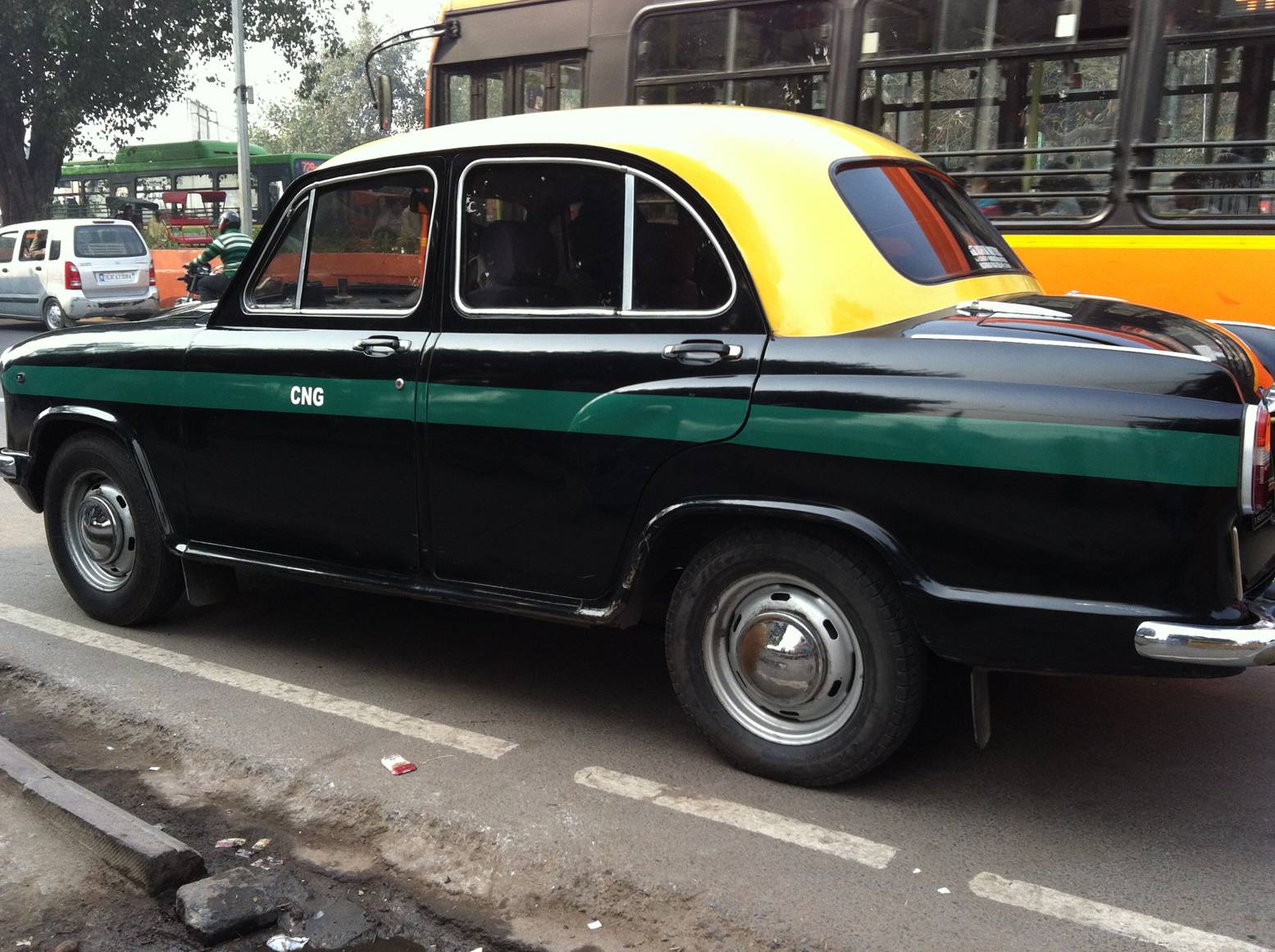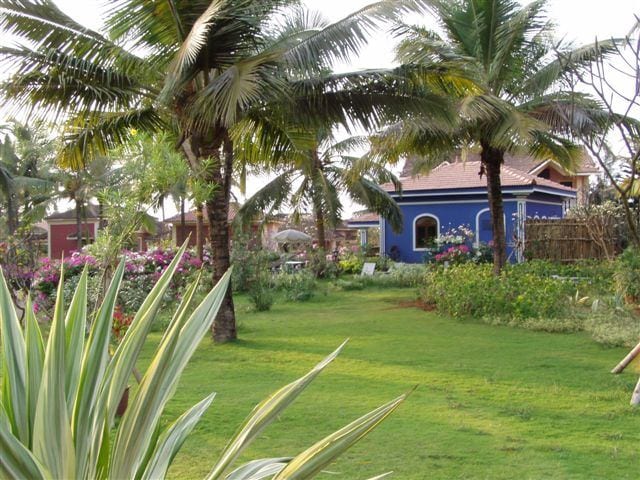March 2004. Some 14 MBA students and an associate professor from the Olin School of Business in St. Louis descended upon India to study how multinational consumer products companies market their brands in such a challenging and diverse market. It was a two-week visit during our Spring Break that took us to New Delhi and Bombay for meetings with General Mills, Procter & Gamble, Colgate-Palmolive, Warner Brothers, Virgin Records, Yum! Brands, Nestlé, General Motors, and Leo Burnett. Afterwards, we trekked to Goa and Agra for some relaxation and experienced the magnificent Taj Mahal.
Olin’s GMS Program
The trip was part of Olin’s elective Global Management Studies (GMS) program. This year, GMS organized three other trips: to the Baltic States to study their ascension into the European Union, to Southeast Asia to study the Asian economic crisis of 1997, and to England and France to compare their healthcare systems to the U.S. healthcare system. Before traveling abroad, students are required to complete a classroom component that may include guest lecturers and presentations. Upon their return to Olin, students are asked to complete a final project and submit a presentation to be shown at the GMS Symposium, an event that officially concludes the 1.5-credit GMS course.
Thoughts of India: Before the Trip
I don’t recall exactly how old I was when I decided to add India to my list of “must see” places. Perhaps it was the constant image of the Taj Mahal that sealed the deal. I never thought this would be a trip I’d make in graduate school. My final choice came down to two: India and Southeast Asia. In the end, the Taj Mahal won.
The GMS India classroom experience also brought a guest lecturer to speak about the realities of life in India. When she asked each student to describe what we expected to find in India, several thoughts came to mind: chaos, overpopulation, poverty, bright colors, heat and beautiful textiles. But most of all, I thought of a country where people went about their business at a dizzying pace while- depending on where one lived- time seemed to stand still. It was as if everyone moved quickly nowhere really.
New Delhi: India’s Harsh Capital
Anyone expecting to find an organized business center and developing economy -like those found in many world capitals- is in for a surprise. As the seat of government, it is somewhat shocking to find that what for many is their first impression of India, seems like a disorganized, unkempt, chaotic city where cows, cars, people, bikes, scooters and green, yellow-top, carriage-type taxis miraculously co-exist and where there is a huge gap between the rich and the poor. Foreign business development may appear at times random in the sense that a modern corporate building may spring up in the middle of nowhere, with no other surrounding development in sight. In general, New Delhi shows pockets of slow, unorganized, unplanned development at the mercy of whoever is in power. And what about daily life as a woman? As a Bombay female friend of mine told me, “Delhi is no place for a woman.”

General Lessons: Doing Business in India
Company visits to General Motors, Nestlé and Yum! Brands (Pizza Hut and KFC) in the Gurgaon, Haryana business district of New Delhi presented the general challenges that foreign multinationals face when doing business in India. We found these challenges to be the same for the companies we visited in Bombay: Colgate-Palmolive, Virgin Records, Warner Brothers, General Mills, Leo Burnett, and P&G.
While it is indeed true that India poses an attractive market that many companies are jumping head first into, there are a number of underlying, constant realities which, if ignored, could spell disaster.
1. First, it behooves foreign multinational companies to understand that Indian consumers will not adapt to an existing product line that may work well elsewhere. In order to be successful, companies need to adapt their product lines to consumers’ tastes, likes and dislikes. While this may seem logical, many a company have learned the hard way. For instance, Kellogg’s is an example of a company that pushed breakfast cereal consumption to a population accustomed to warm breakfasts which include everything but cereal. The result? Losses in the millions of dollars. Just recently, Kellogg’s has reintroduced cereal consumption but in the afternoon as a snack of sorts.
2. Second, India is not a homogeneous territory. In fact, many agree that India is comprised of many distinct countries. What sells well in the North can be diametrically opposite of what sells well in the South. In India, it is said that many countries, languages and dialects converge in a single territory where fortunately the common thread is English.
3. Lastly, business in India is not as easy as saying, “We’ll market our products to the 20% of the population not considered poor.” While this market would be 200 million consumers strong, the competition for “share of wallet” is tremendous. Pricing is even more critical in India, where the salaries for that select 20% are extremely low when compared to average U.S. salaries. As such, for instance, P&G could not expect to successfully sell the 11-pound Tide detergent box that Americans are used to. Instead, the company had to re-package detergent in sachet-size portions that it could sell at competitive prices.
Before leaving New Delhi, we traveled by bus to Agra, famous for its marble production and home to the Taj Mahal, one of the wonders of the world. We spent most of the afternoon on the grounds of the Taj Mahal, waiting for the monument to turn pink as the sun went down. While we waited for the wondrous effect, a large contingent of Indian women found some us foreigners so unusual they asked if they could take our picture. We posed so many times, we thought of charging some rupees! When a group of them requested that I stand next to them for yet another photo, they all marveled at my 5’10” frame. Yes, foreigner and very tall! What a combination! As the sun set that day, the Taj’s marble did not turn pink. It was not to be and we drove back to New Delhi.
Photo Caption: Part of the Indian contingent at the Taj Mahal who found us foreigners very intriguing and shot many a photo of us. So, we shot a couple ourselves!
Goa’s Beach Paradise
In between our New Delhi and Bombay company visits, we squeezed in three days in Goa, a former Portuguese settlement that boasts the world’s second beach haven after Spain’s Ibiza. This beach paradise is home to countless number of beaches and resort operations from some of India’s and the world’s best hotel resort chains. This interlude proved to be the perfect way to unwind from out New Delhi experience and prepare us for our tight Bombay schedule that left us with little tile to enjoy city life.

Bombay: Bustling Business Center
We arrived in Bombay not by plane but by a 10-hour train ride that concludes at a station where commerce is immediately palpable. Bombay is indeed every bit the business center that New Delhi is not. Real estate costs are comparable to those in New York City. From the minute one arrives in the city, there is a sense that considerable business activity takes place. Here the pace is also hectic, and driving is a true adventure guaranteed to raise one’s stress to never before experienced levels. If at any point my career were to take me back to Bombay, I would definitely hire a driver! There is no way on this Earth I would dare do my own driving. Our company visits shed the same general information on the challenges of doing business in India.
Some Final Thoughts
The GMS experience proved to be a unique opportunity to experience a land that had always intrigued me. The many Indian friends I have made along the way helped fuel my interest. And the Taj Mahal did its part too.
In general, this experience redefined my concept of poverty. Yes, New Delhi was a tough environment to be in, but one that I’m glad I saw. Traveling from New Delhi to Agra, it was not an uncommon to see some men defecating on the side of the road where meters away some tried to gather whatever water they could and others bathed. A burning stench was not uncommon either as was garbage. I asked my Bombay friend about the smell and she replied that it was burning garbage. She also spoke of a loss of dignity upon hearing about the men on the side of the road.
Bombay, on the other hand, was closer to the Western concept of a large city, however not devoid of pockets of slums. It is not a city of tourist sites but of business. Goa was paradise, and Agra gave me the Taj Mahal. There remains a lot of India that I have yet to experience, but this was indeed a great introduction.
Diana I. Lozano is wrapping up her first year at the Olin School of Business, located at Washington University in St. Louis.


Leave a Reply
You must be logged in to post a comment.